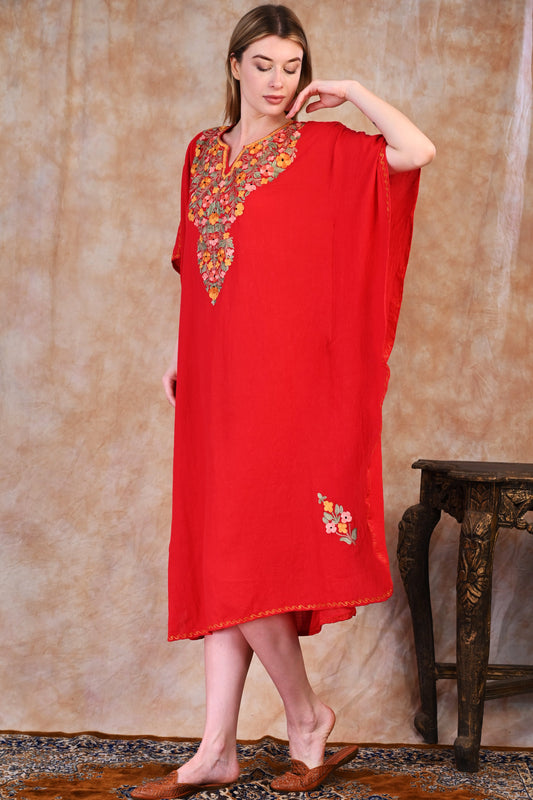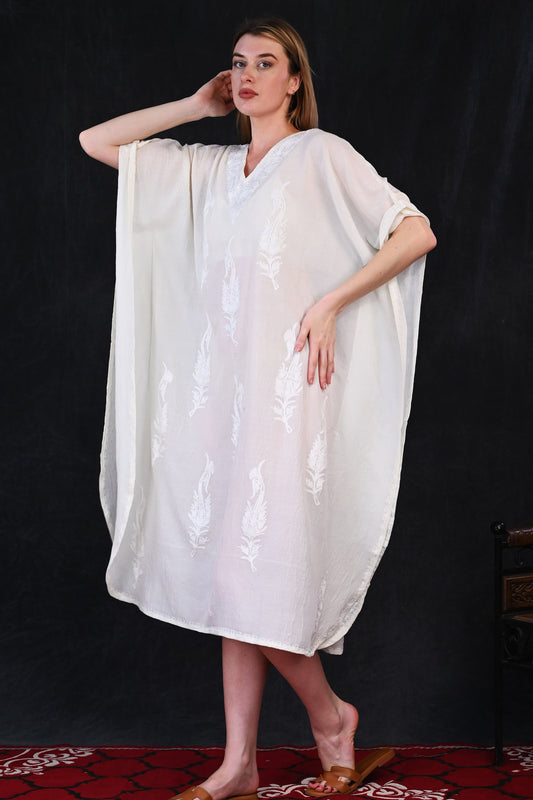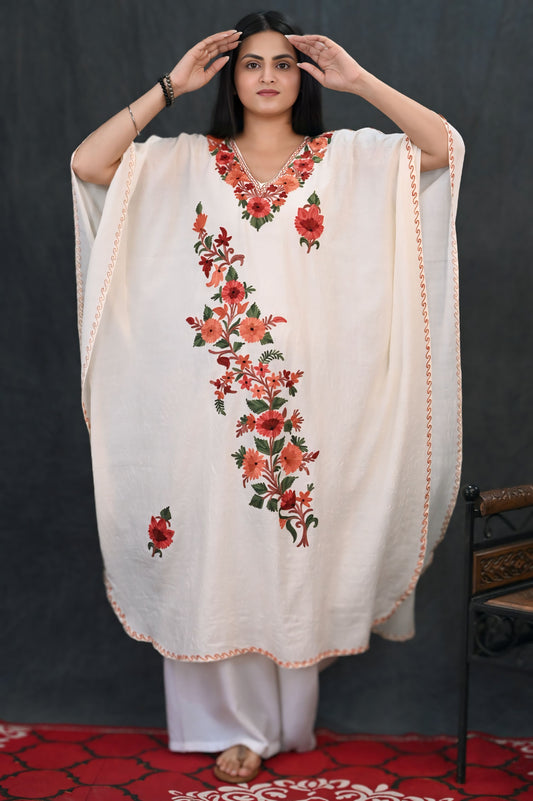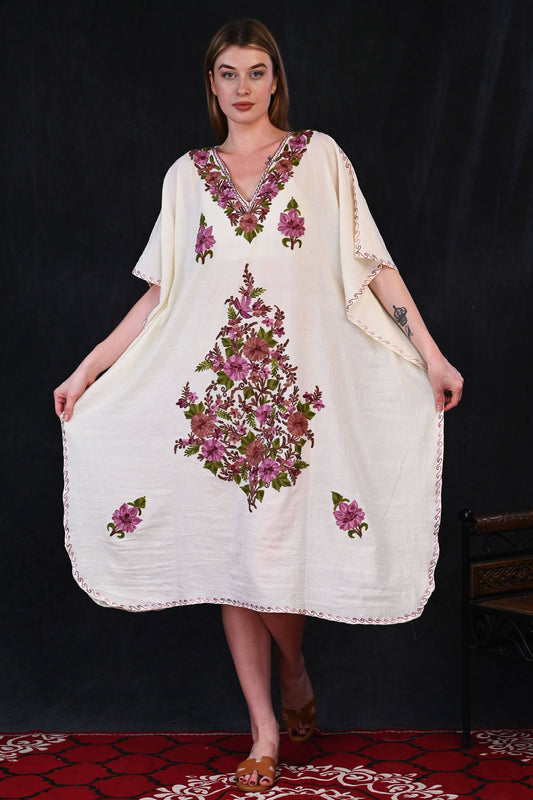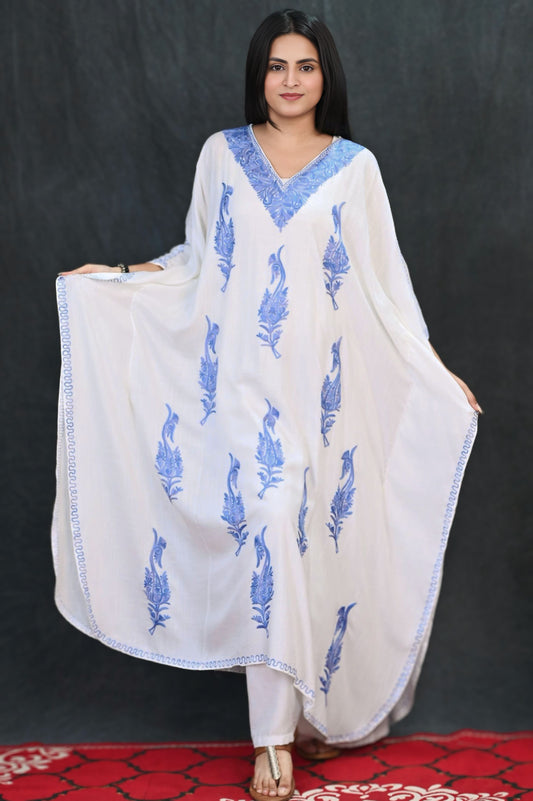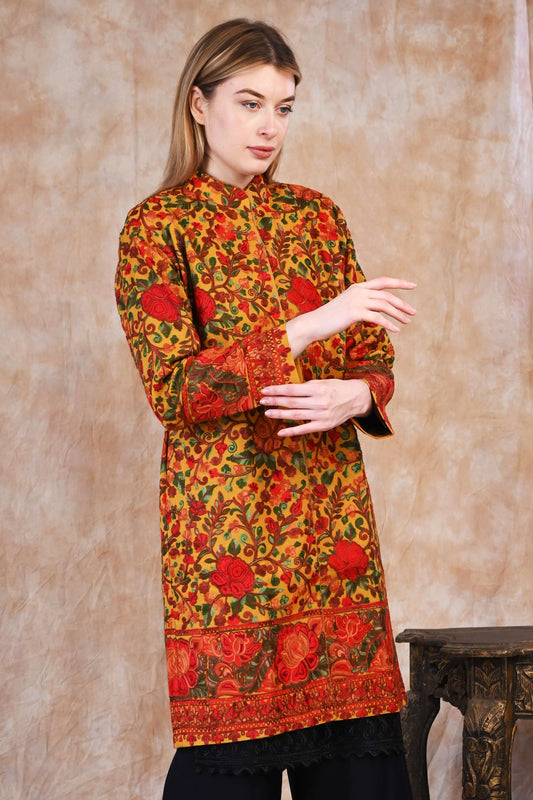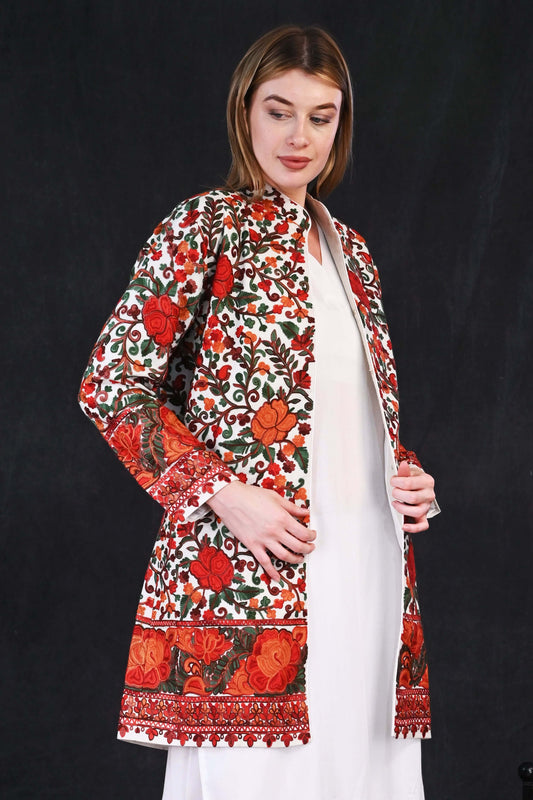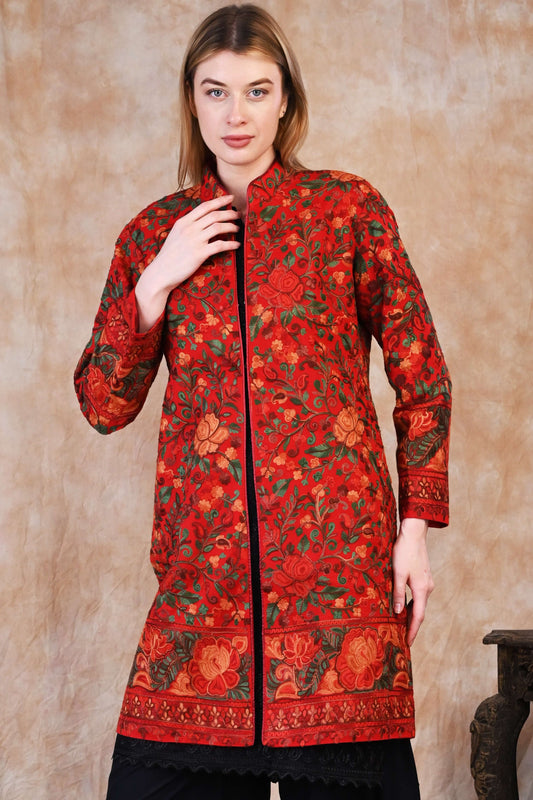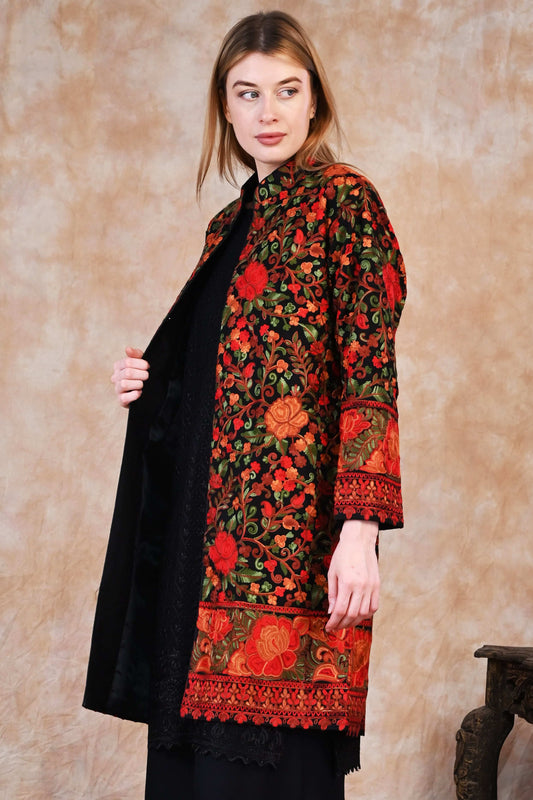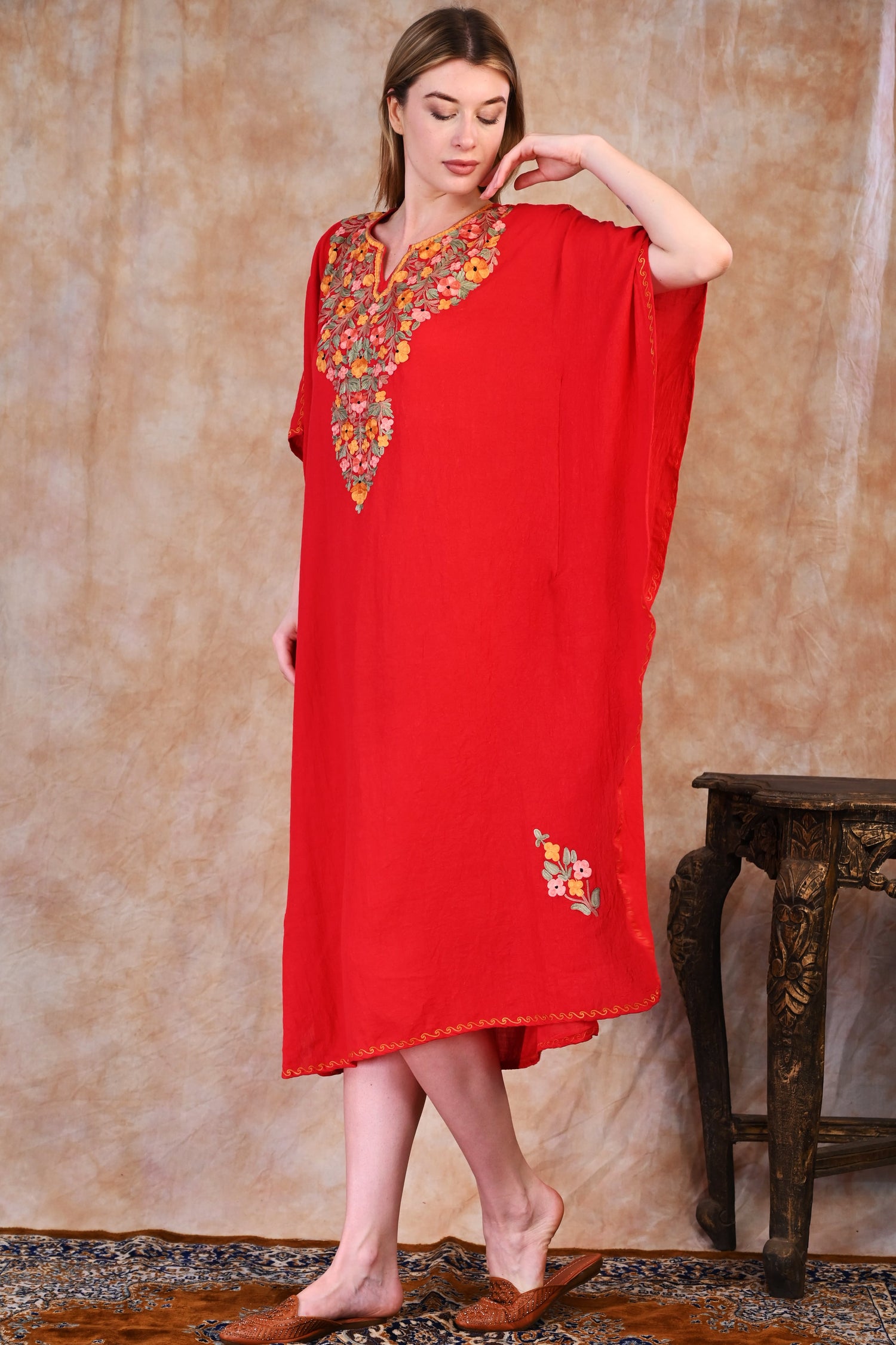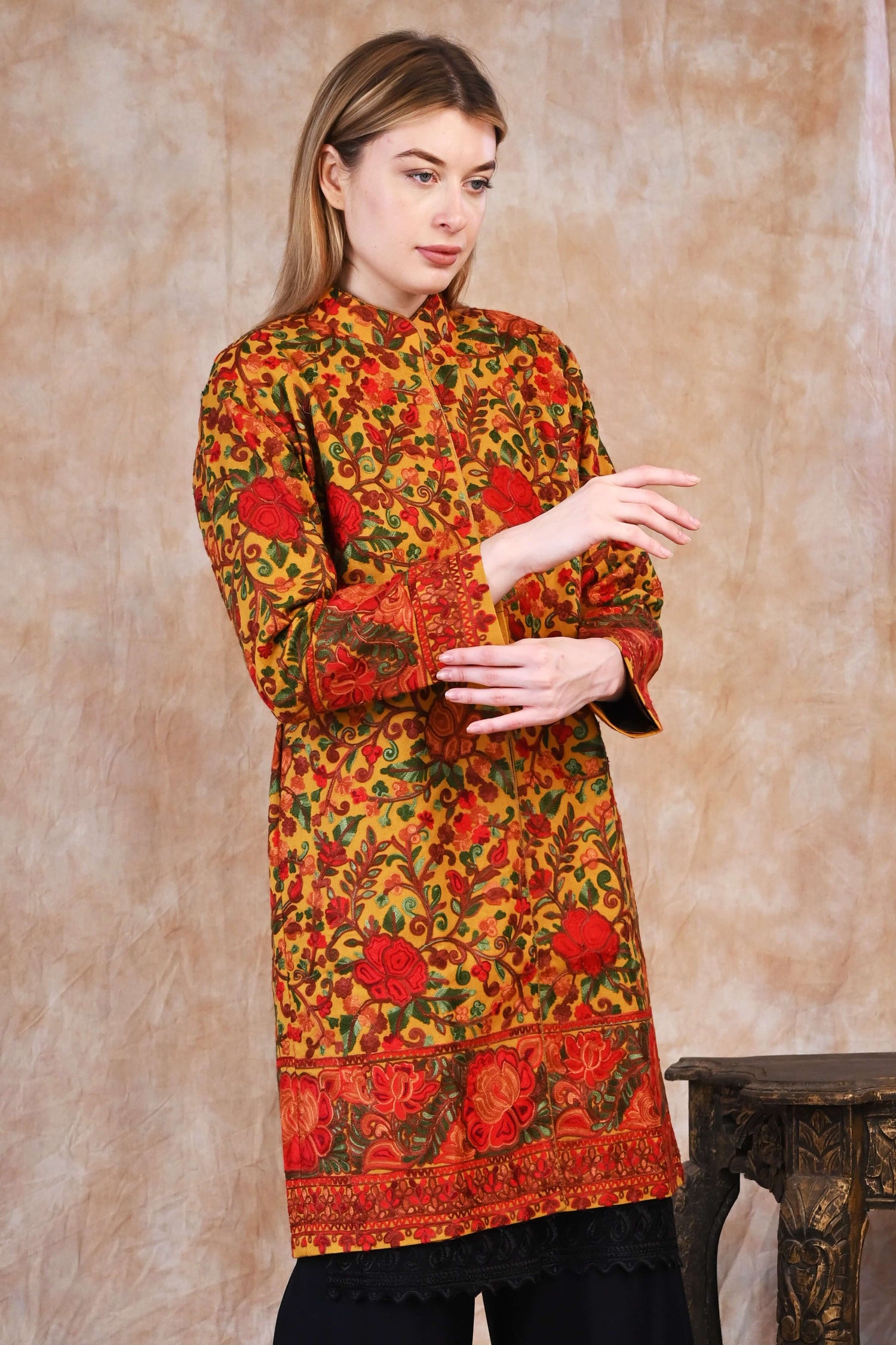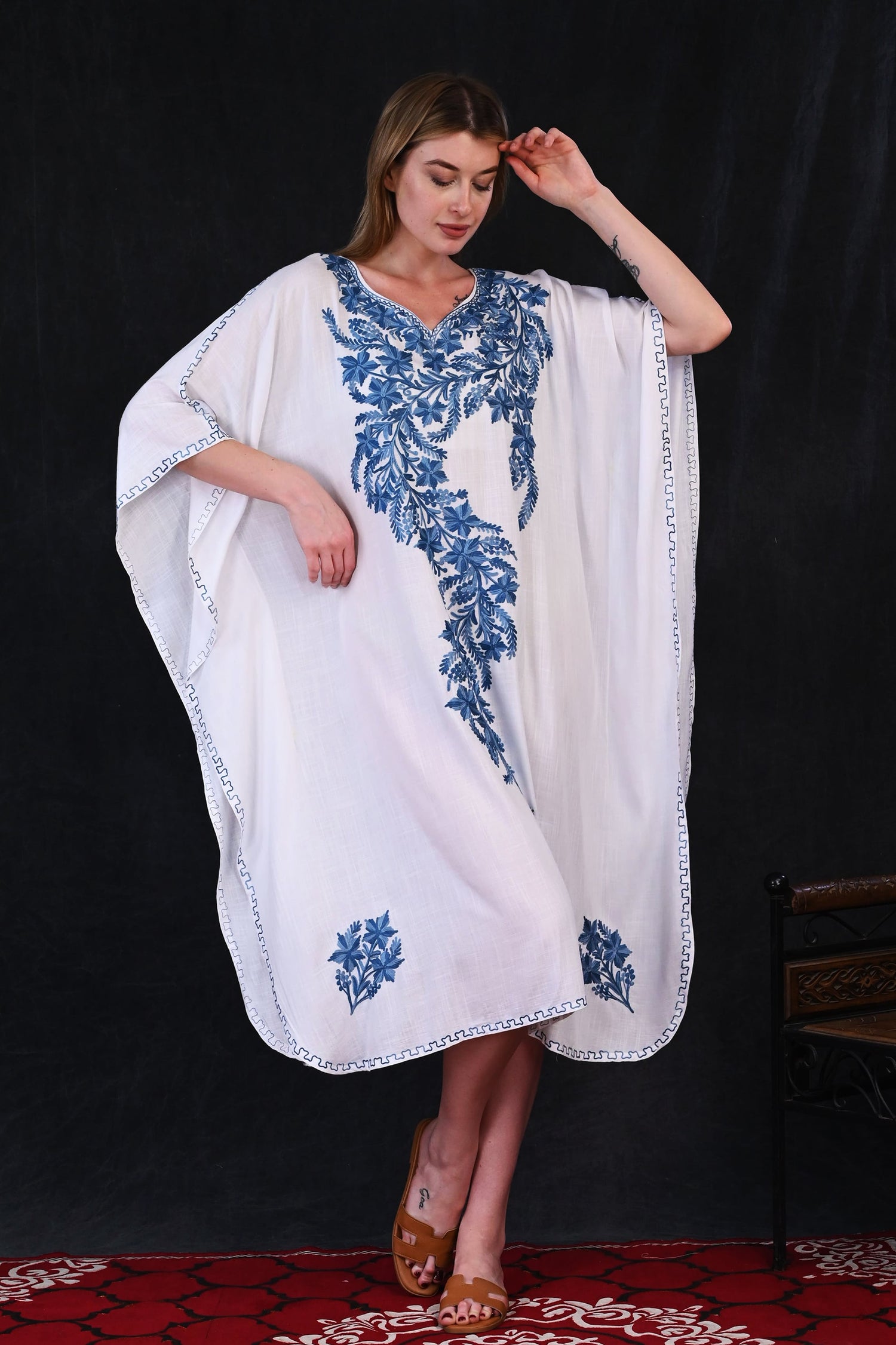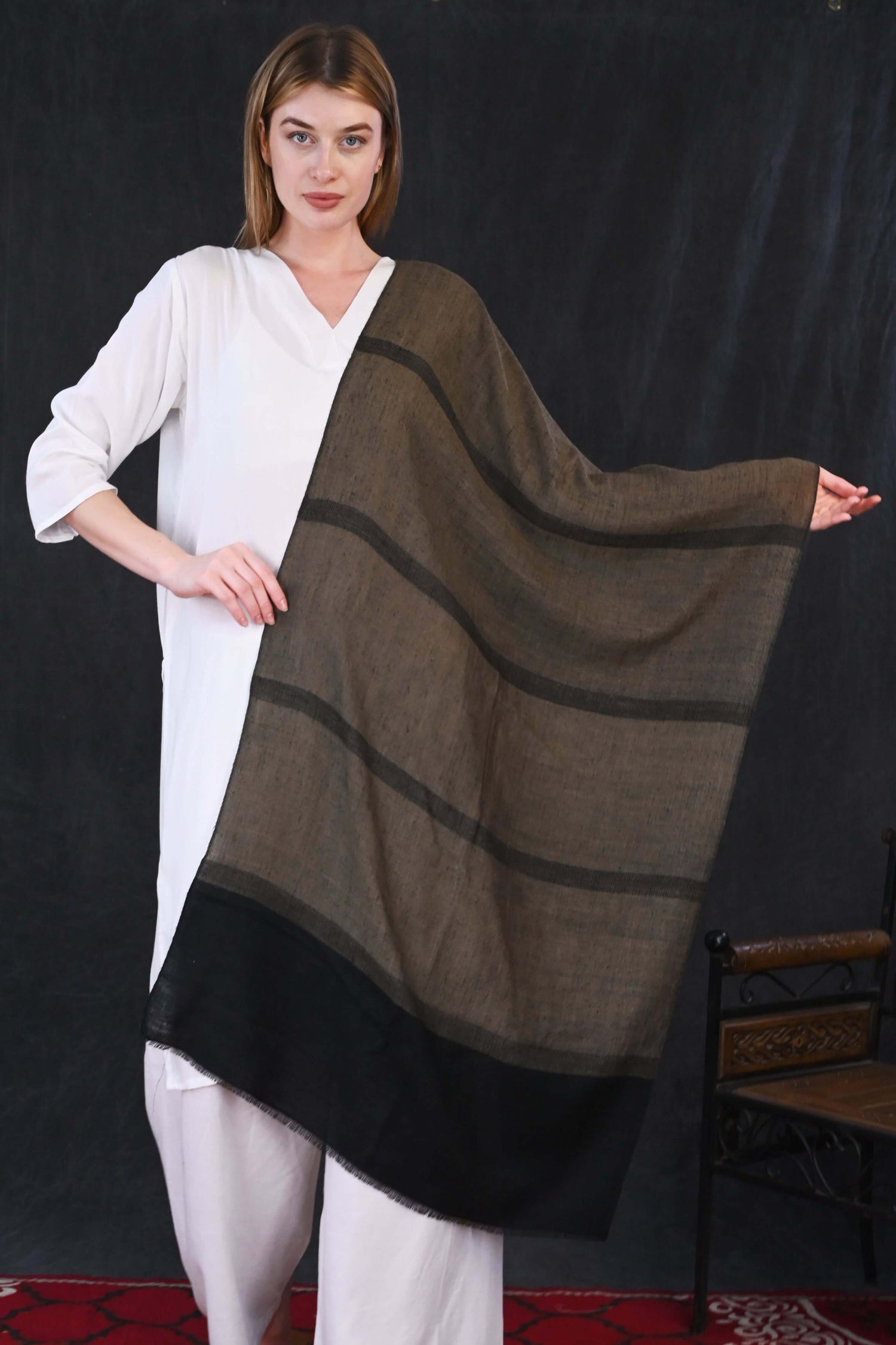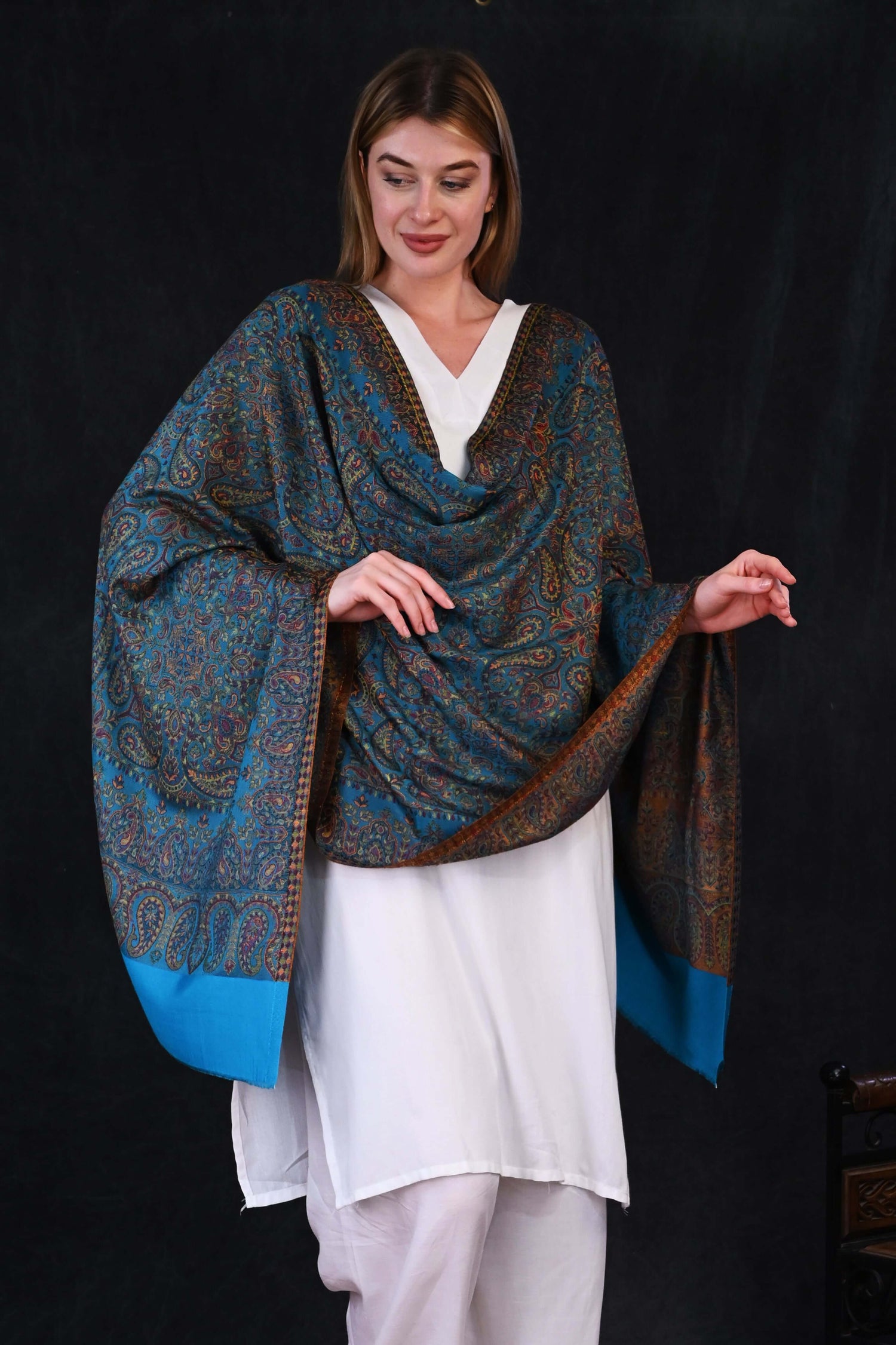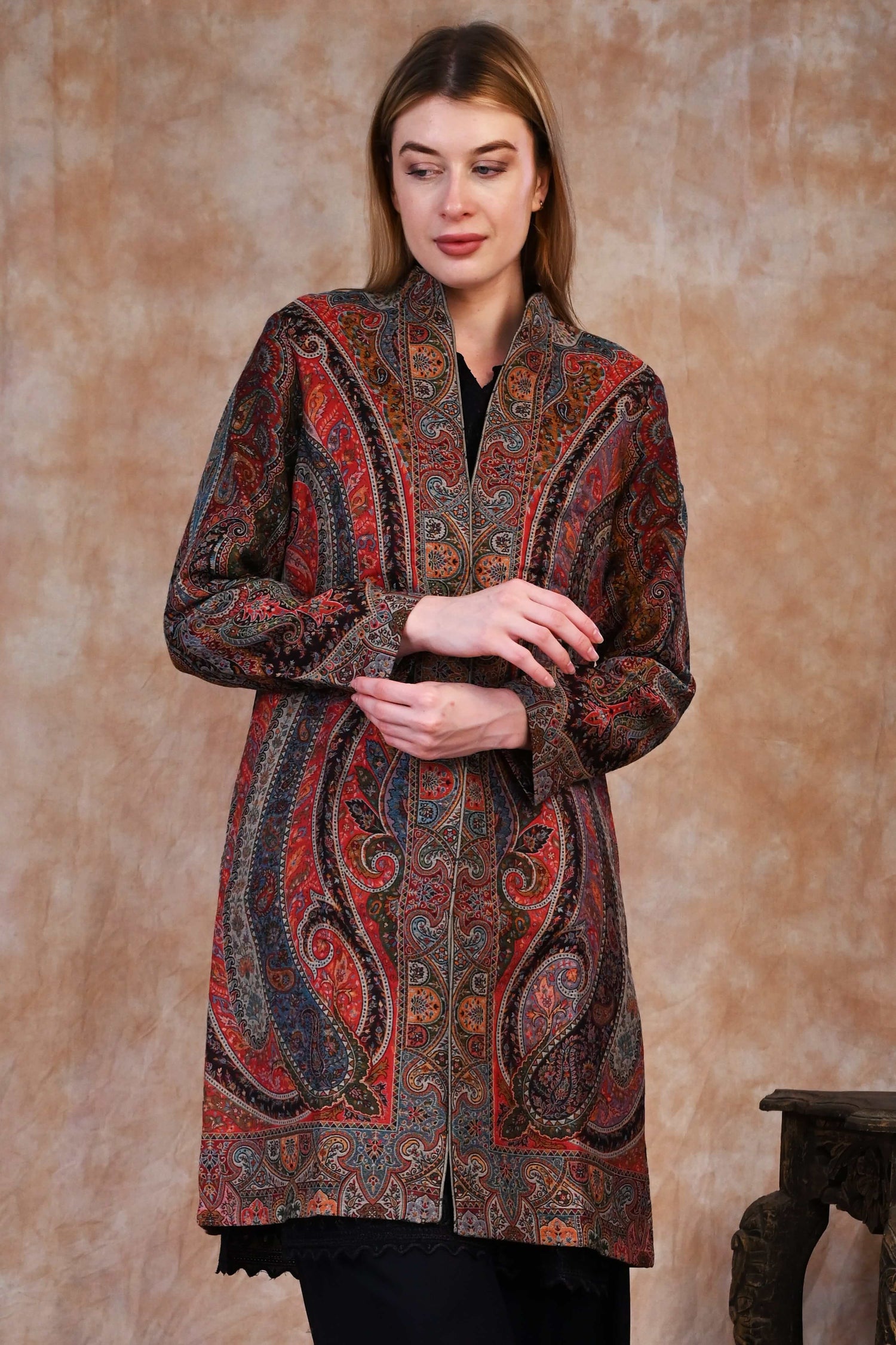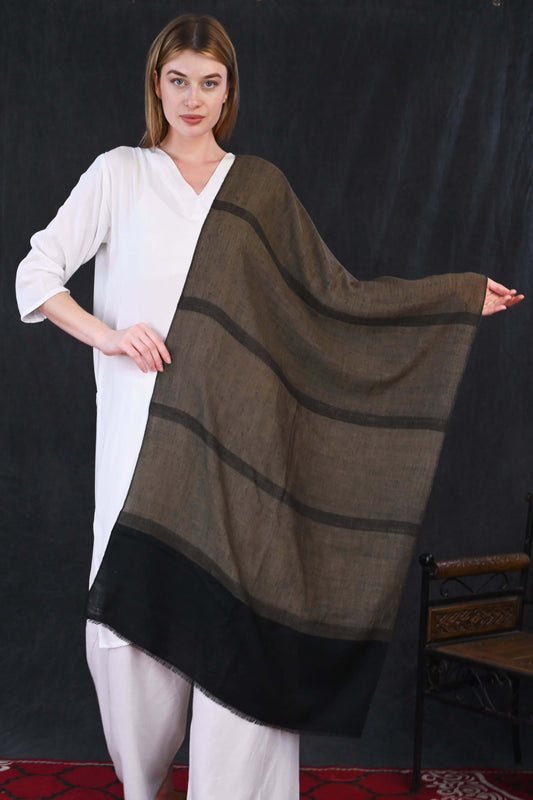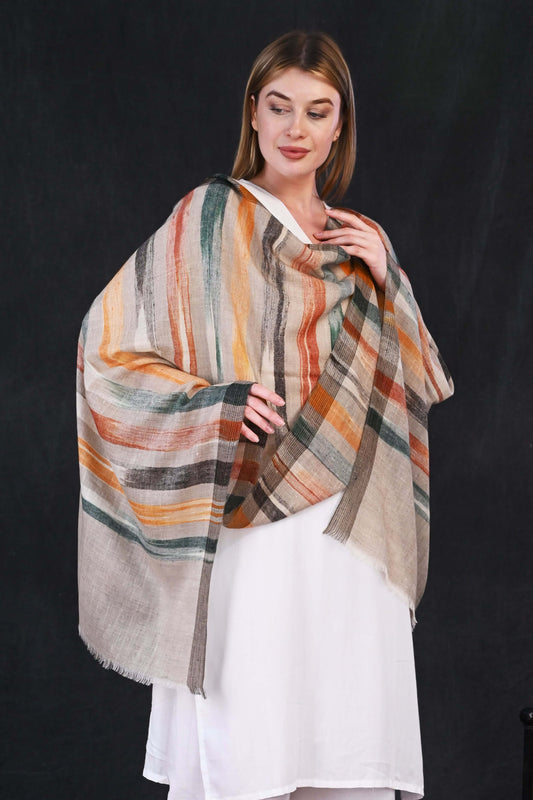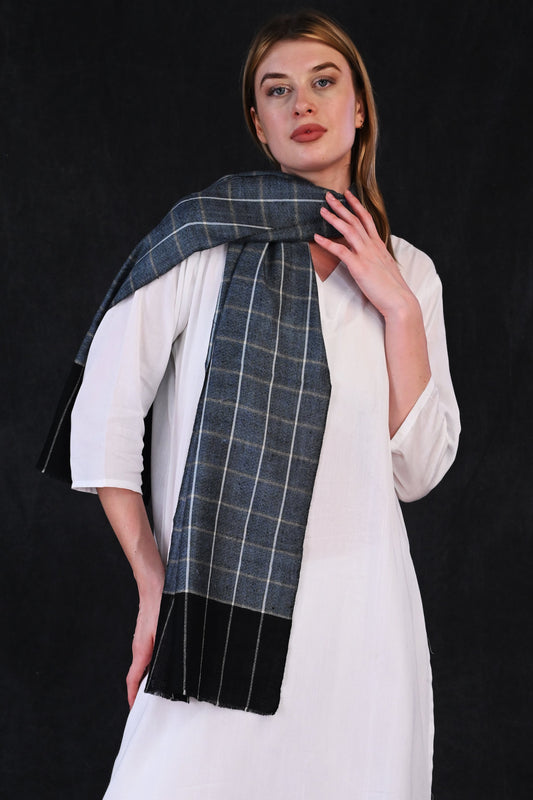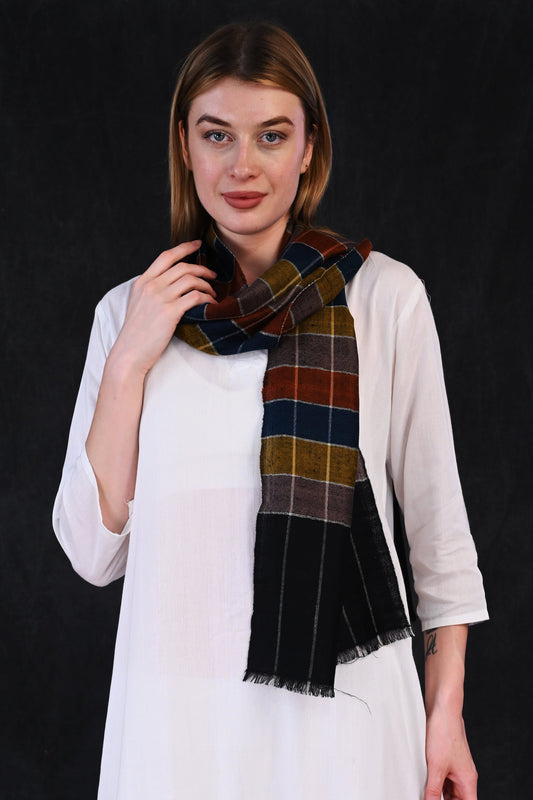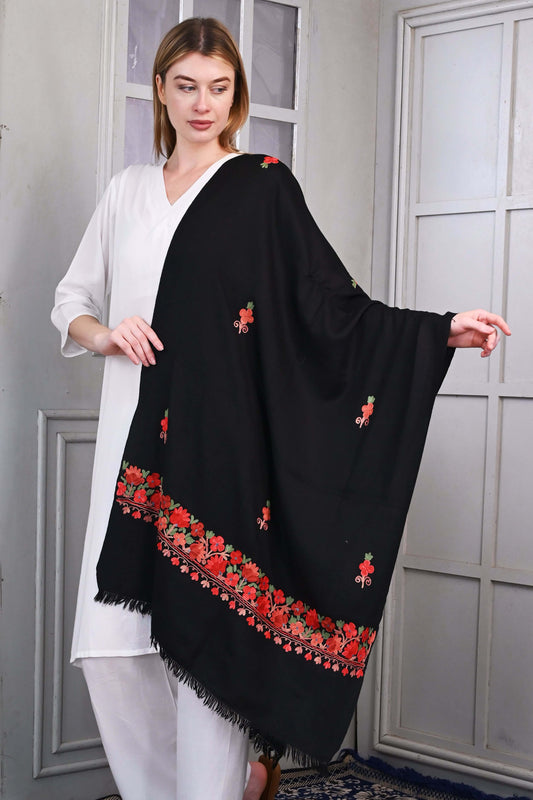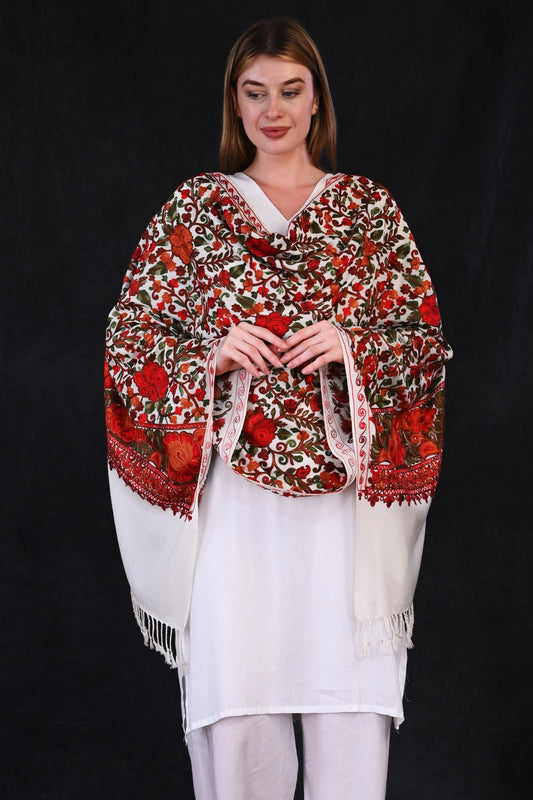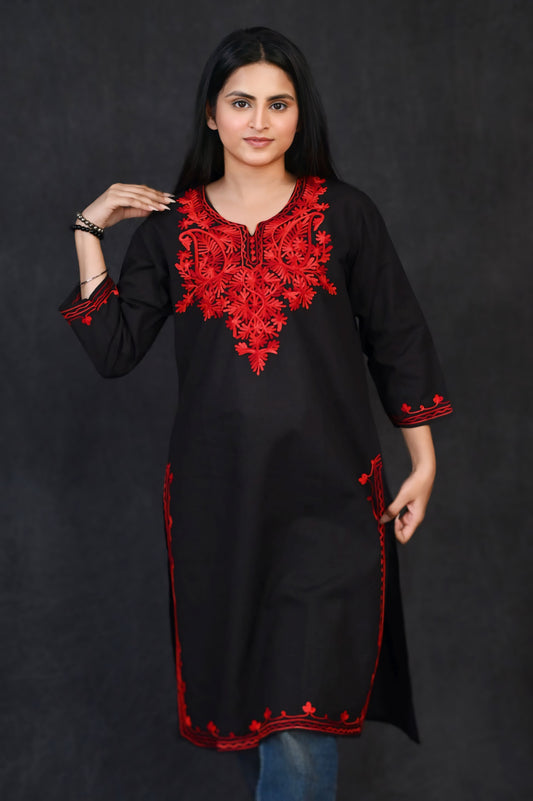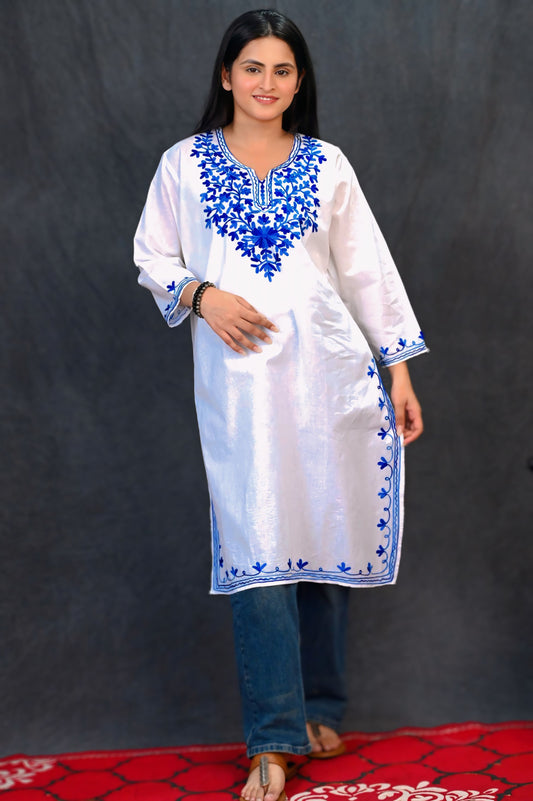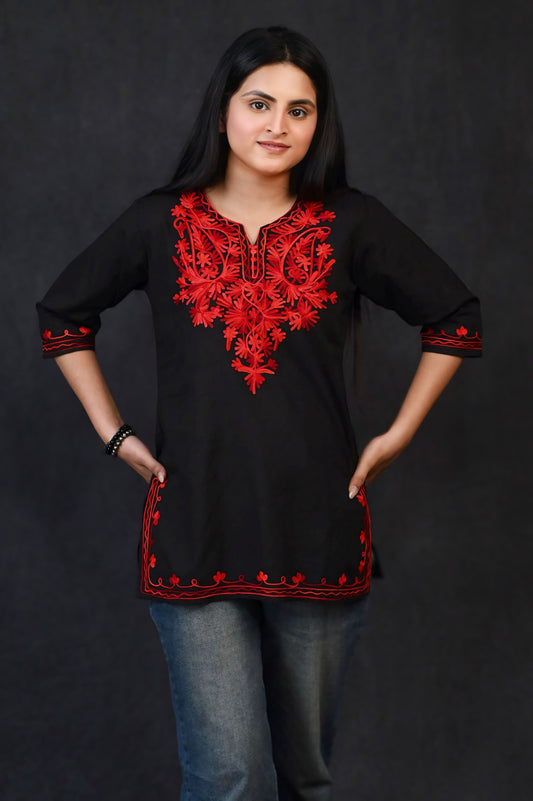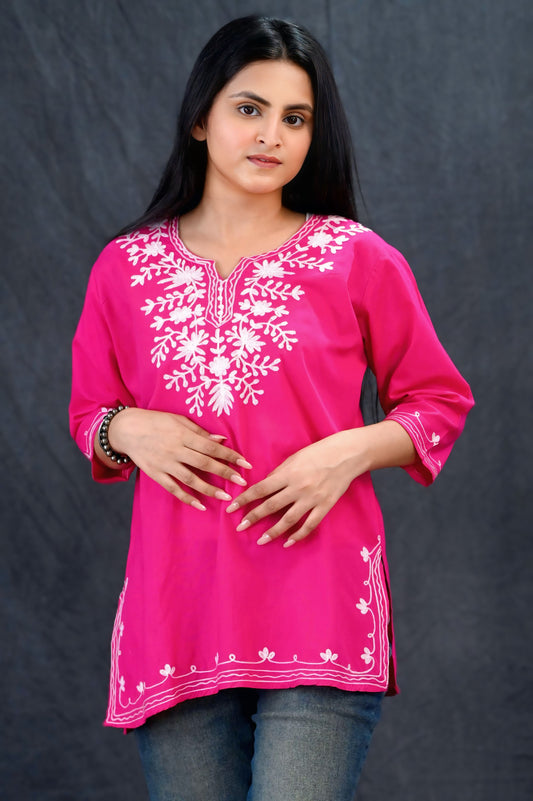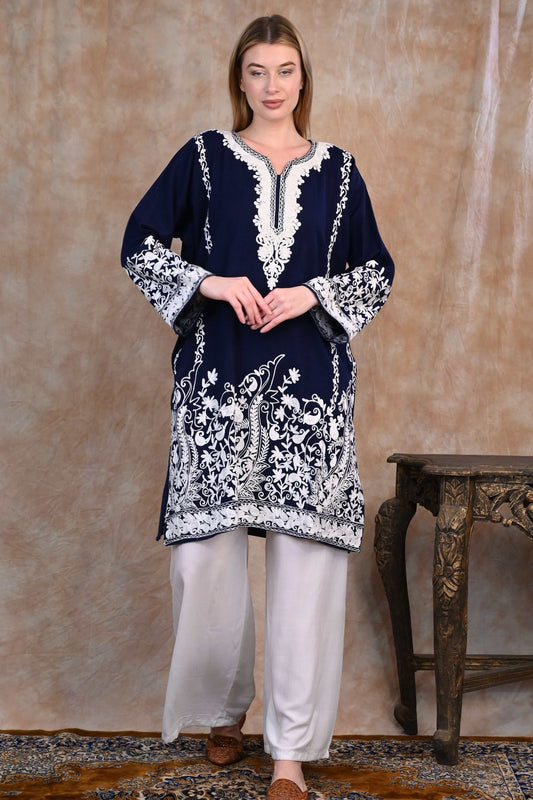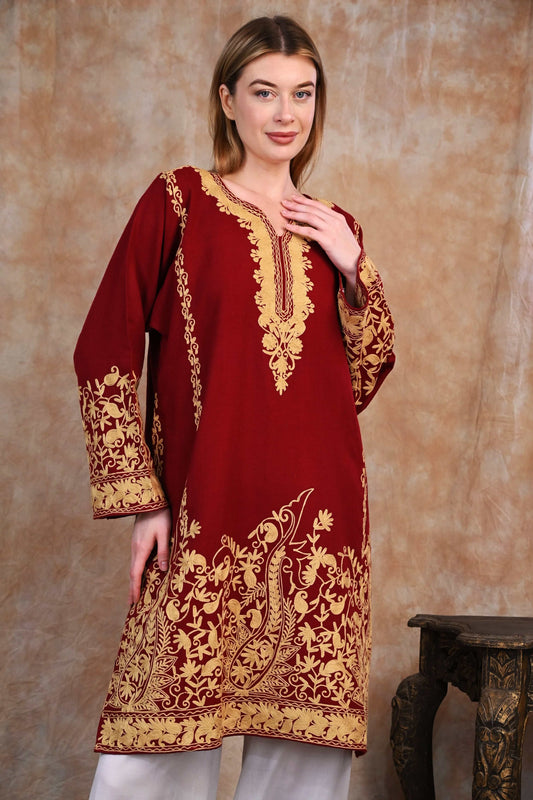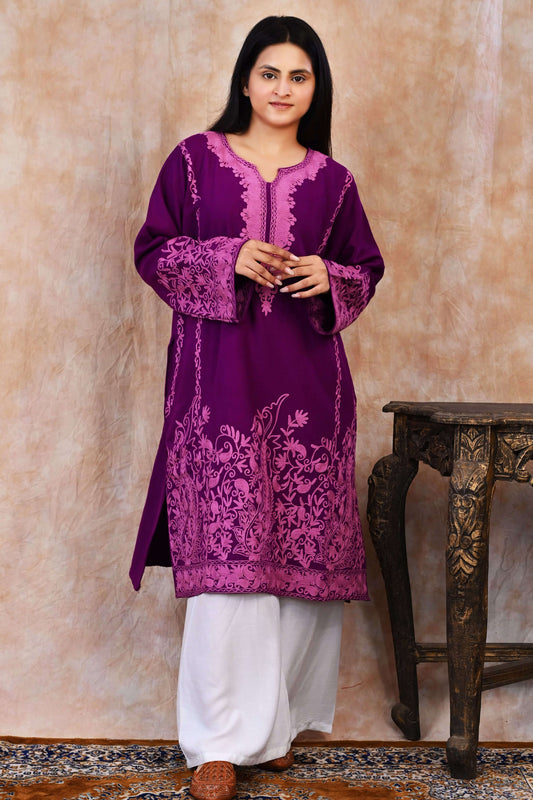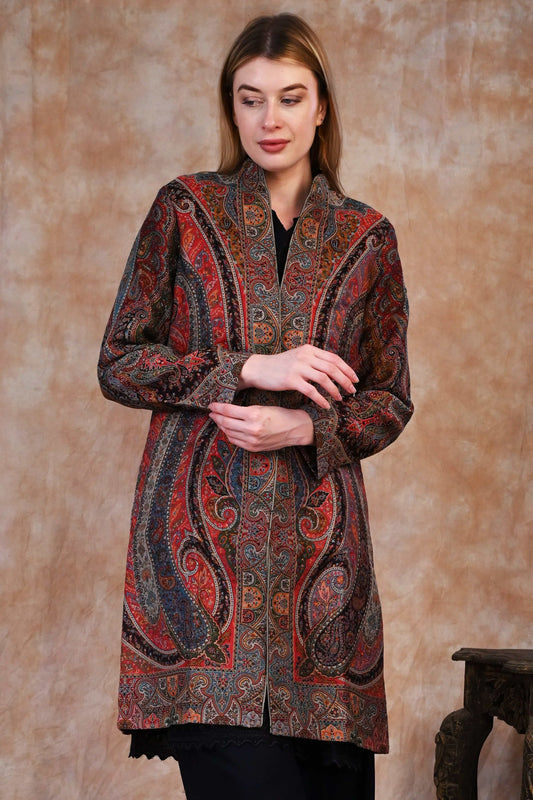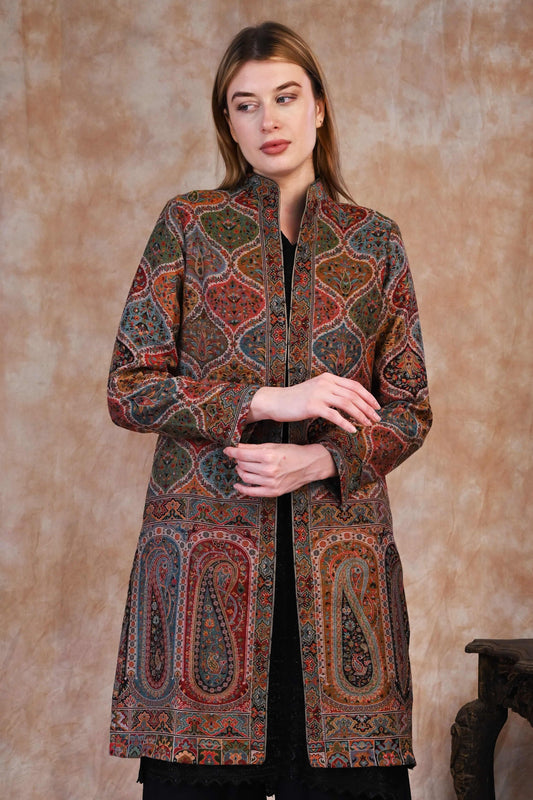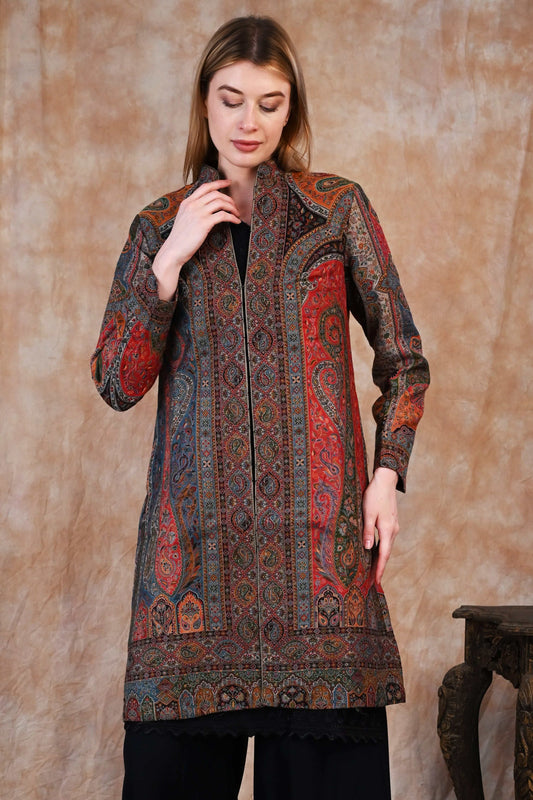1
/
of
3

Effortless Grace in Every Fold
Light as air, bold in black - a Kashmiri kaftan that moves with you
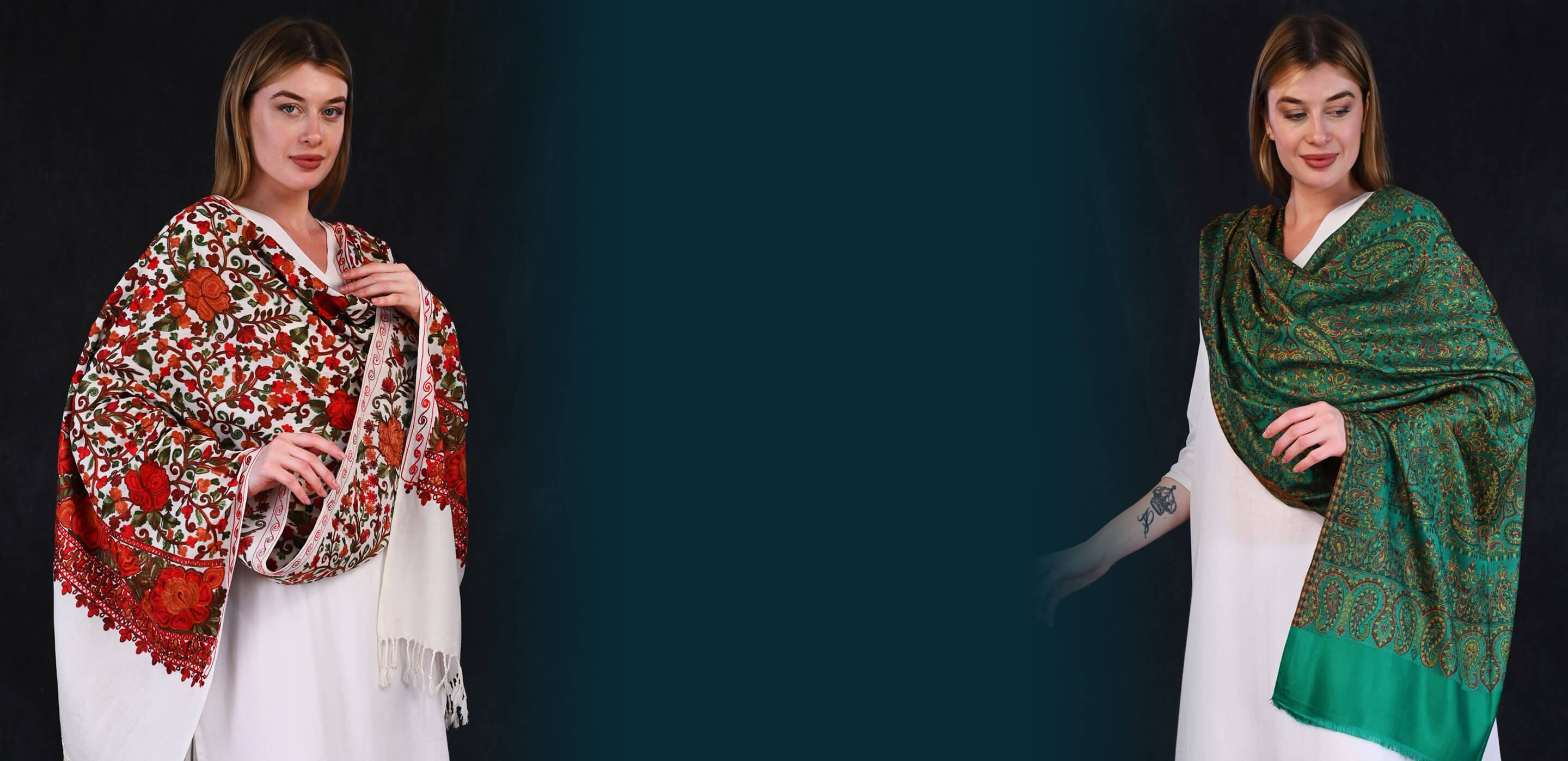
Threads of Tradition, Woven for Today
Handcrafted shawls that bring comfort, culture, and beauty to every season

Where Threads Blossom in Invory
Delicate Aari embroidery meets classic Jamawar in a jacket crafted to enchant.
WELCOME TO PASHMINA PARADISE
A timeless blend of heritage and elegance, hand crafted with care and rooted in the heart of Kashmir, India. Each piece tells a story-of artistry, tradition, and modern grace.
Crush-Worthy Kaftans
-
Deep Maroon Kashmiri Crush Cotton Kaftan
Regular price Rs. 2,016.00Regular priceUnit price / perRs. 3,472.00Sale price Rs. 2,016.00Sale -
Ivory White Kashmiri Crush Cotton Kaftan with Tone-on-Tone Embroidery
Regular price Rs. 1,792.00Regular priceUnit price / perRs. 3,388.00Sale price Rs. 1,792.00Sale -
Kashmiri Crush Cotton Kaftan – Sunset Bloom Edition
Regular price Rs. 2,016.00Regular priceUnit price / perRs. 3,696.00Sale price Rs. 2,016.00Sale -
Kashmiri Crush Cotton Kaftan – Grace in Every Thread
Regular price Rs. 2,016.00Regular priceUnit price / perRs. 3,696.00Sale price Rs. 2,016.00Sale
1
/
of
4
Rayon Luxe Kaftans
-
White Kashmiri Rayon Kaftan with Majestic Blue Vine Embroidery
Regular price Rs. 2,240.00Regular priceUnit price / perRs. 3,920.00Sale price Rs. 2,240.00Sale -
Ivory Kashmiri Rayon Kaftan with Blue All-Over Floral Motifs
Regular price Rs. 2,240.00Regular priceUnit price / perRs. 3,920.00Sale price Rs. 2,240.00Sale -
White Kashmiri Rayon Kaftan with Lilac Paisley Motifs
Regular price Rs. 2,240.00Regular priceUnit price / perRs. 3,920.00Sale price Rs. 2,240.00Sale
1
/
of
3
Ari Jama Jackets
-
Ari Jama Jacket – Autumn Harvest
Regular price Rs. 6,888.00Regular priceUnit price / perRs. 8,568.00Sale price Rs. 6,888.00Sale -
Ari Jama Jacket – Ivory Garden
Regular price Rs. 6,888.00Regular priceUnit price / perRs. 8,568.00Sale price Rs. 6,888.00Sale -
Ari Jama Jacket – Crimson Blossom
Regular price Rs. 6,888.00Regular priceUnit price / perRs. 8,568.00Sale price Rs. 6,888.00Sale -
Ari Jama Jacket – Midnight Bloom
Regular price Rs. 6,888.00Regular priceUnit price / perRs. 8,568.00Sale price Rs. 6,888.00Sale
1
/
of
4
Our Exclusive Collections
Pure Pashmina Elegance
-
Pashmina Designer Hand-Made Stole – Dual-Tone Black & Olive Patterned Weave
Regular price Rs. 12,768.00Regular priceUnit price / perRs. 15,008.00Sale price Rs. 12,768.00Sale -
Pashmina Designer Hand-Made Stole – Earth-Tone Stripes on Natural Weave
Regular price Rs. 12,768.00Regular priceUnit price / perRs. 15,008.00Sale price Rs. 12,768.00Sale -
Pashmina Check Muffler – Dual-Tone Black & Grey with Subtle Checks
Regular price Rs. 5,936.00Regular priceUnit price / perRs. 7,616.00Sale price Rs. 5,936.00Sale -
Pashmina Check Muffler – Multicolor Block & Grid Pattern
Regular price Rs. 5,936.00Regular priceUnit price / perRs. 7,616.00Sale price Rs. 5,936.00Sale
1
/
of
4
Shawls and Stole Edit
-
Teal Mirage – Modal Jamawar Stole with Regal Paisley Border
Regular price Rs. 1,232.00Regular priceUnit price / perRs. 2,912.00Sale price Rs. 1,232.00Sale -
Woolen Aari Pala Stole – Black with Multicolor Floral Embroidery
Regular price Rs. 2,576.00Regular priceUnit price / perRs. 4,256.00Sale price Rs. 2,576.00Sale -
Aari Jama Embroidered Stole – Ivory Elegance with Multicolor Floral Intricacy
Regular price Rs. 3,012.80Regular priceUnit price / perRs. 4,704.00Sale price Rs. 3,012.80Sale -
Fine Wool Chinar Design Stole – Beige with Maroon Leaf Motifs
Regular price Rs. 2,240.00Regular priceUnit price / perRs. 3,920.00Sale price Rs. 2,240.00Sale
1
/
of
4
Tops and Kurtis
-
Black & Red Chikankari Kurti – Bold Elegance Meets Tradition
Regular price Rs. 1,232.00Regular priceUnit price / perRs. 8,568.00Sale price Rs. 1,232.00Sale -
White & Blue Chikankari Kurti – Graceful, Crisp & Contemporary
Regular price Rs. 1,232.00Regular priceUnit price / perRs. 2,912.00Sale price Rs. 1,232.00Sale -
Fiery Elegance: Black & Red Short Chikankari Kurti
Regular price Rs. 1,120.00Regular priceUnit price / perRs. 2,800.00Sale price Rs. 1,120.00Sale -
Elegant Fuchsia Chikankari Short Kurti
Regular price Rs. 1,120.00Regular priceUnit price / perRs. 2,800.00Sale price Rs. 1,120.00Sale
1
/
of
4
Kashmiri Woolen Phiran
-
Kashmiri Woolen Phiran – Ocean Blue with Sky Blue Embroidery
Regular price Rs. 2,240.00Regular priceUnit price / perRs. 3,920.00Sale price Rs. 2,240.00Sale -
Kashmiri Woolen Phiran – Midnight Blue with Ivory Tilla Embroidery
Regular price Rs. 2,240.00Regular priceUnit price / perRs. 3,920.00Sale price Rs. 2,240.00Sale -
Kashmiri Woolen Phiran – Royal Maroon with Mustard Tilla Embroidery
Regular price Rs. 2,240.00Regular priceUnit price / perRs. 3,920.00Sale price Rs. 2,240.00Sale -
Kashmiri Woolen Phiran – Royal Purple with Rose Pink Embroidery
Regular price Rs. 2,240.00Regular priceUnit price / perRs. 3,920.00Sale price Rs. 2,240.00Sale
1
/
of
4
Antique Kani Jamawar Long Jackets
-
Antique Kani Jamawar Long Jacket – Mughal Elegance Woven in Time
Regular price Rs. 6,888.00Regular priceUnit price / perRs. 8,568.00Sale price Rs. 6,888.00Sale -
Antique Kani Jamawar Long Jacket – A Royal Weave of Legacy
Regular price Rs. 6,888.00Regular priceUnit price / perRs. 8,568.00Sale price Rs. 6,888.00Sale -
Antique Kani Jamawar Long Jacket - Legacy in Every Thread
Regular price Rs. 6,888.00Regular priceUnit price / perRs. 8,568.00Sale price Rs. 6,888.00Sale
1
/
of
3

